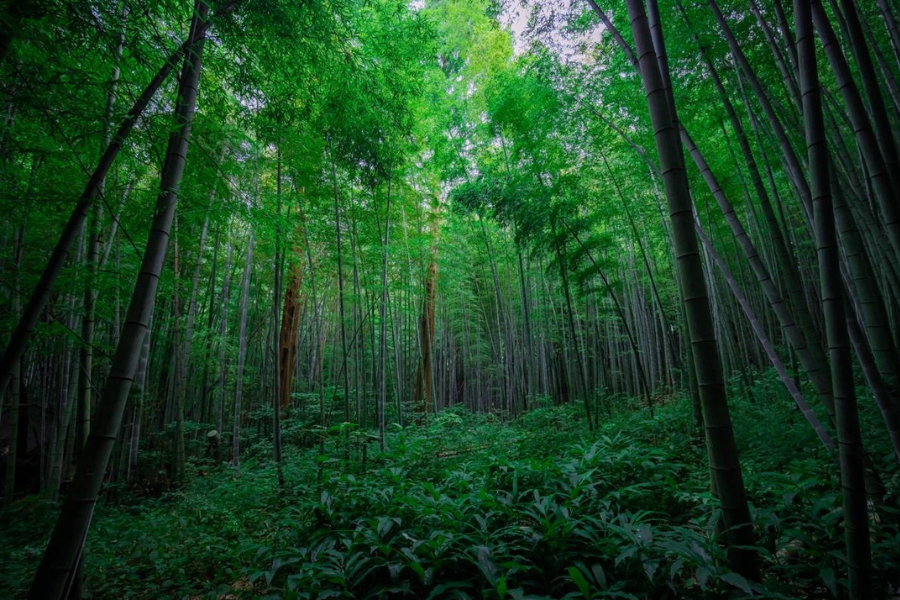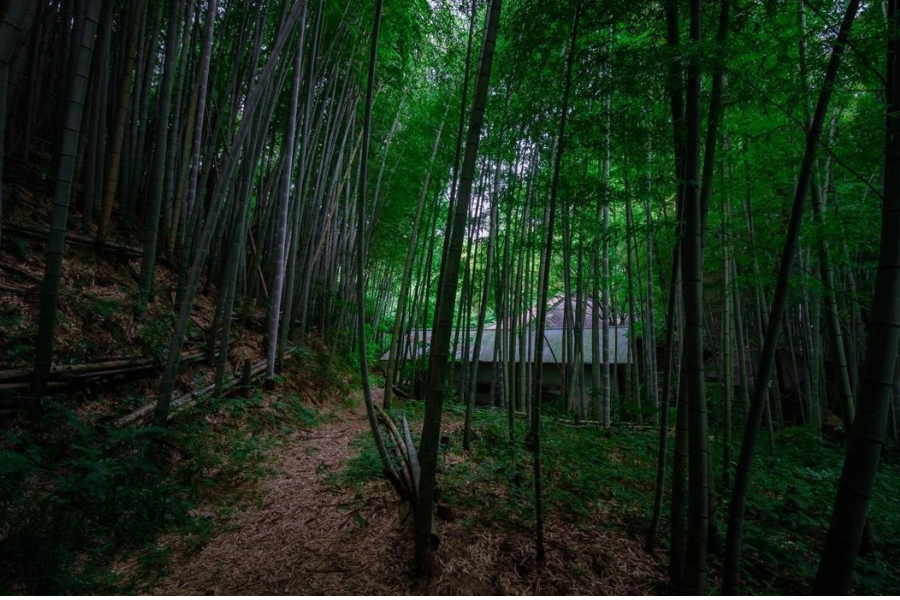Bamboo, with its elegant form and notable resilience, has long been an essential element in Japanese life. Beyond its visual appeal, bamboo symbolizes purity, flexibility, and strength, which are values deeply woven into Japanese tradition. From ancient myths to modern sustainability efforts, bamboo plays a multifaceted role in shaping Japan’s cultural identity and ecological future.
A Cultural and Spiritual Symbol
In Japanese culture, bamboo is more than a material; it holds spiritual and symbolic weight. Often planted near shrines and temples, bamboo is believed to repel evil and offer protection. This symbolism is reinforced through its use in kadomatsu, the New Year’s decorations placed at entrances to invite good fortune. Additionally, the famous folktale The Tale of the Bamboo Cutter (Taketori Monogatari)—widely considered Japan’s oldest narrative—portrays bamboo as a mystical vessel of life and beauty, containing the moon princess Kaguya-hime [3].

Its spiritual resonance continues in the peaceful rhythm of shishi-odoshi—bamboo water features used in Zen gardens to create a meditative atmosphere. These sounds are not just aesthetic but reflect the Japanese practice of ma, the conscious use of negative space and silence [5].
Versatility in Craft and Daily Life
Bamboo’s practical applications span across centuries and sectors. Traditionally, it has been used to craft baskets, furniture, fishing rods, fences, musical instruments, and utensils. Its lightweight structure, durability, and rapid growth make it ideal for both everyday tools and refined artisan works. The craft of takezaiku (bamboo weaving) is recognized as a traditional artform in Japan, with regions such as Beppu in Oita Prefecture known for their master craft [1].
Artisans use fine bamboo strips to create tea ceremony utensils, ikebana baskets, and even contemporary sculptures. In music, the shakuhachi bamboo flute has been a key instrument in Zen Buddhist practice and traditional Japanese composition, known for its ethereal and introspective tone [2].
Bamboo and Sustainability in Modern Japan
In the face of climate change and material overconsumption, bamboo is being reappreciated for its ecological benefits. It grows significantly faster than trees, requires no fertilizers or pesticides, and sequesters large amounts of carbon dioxide. These qualities make it a prime resource for sustainable design, biodegradable packaging, and renewable architecture [4].
Japan is now seeing a resurgence in bamboo utilization for eco-conscious construction and product design, from housing to tableware. Notably, PlanetDAO’s second heritage preservation project is located in the heart of a 7,000m² bamboo forest. This site not only reflects bamboo’s cultural significance but also highlights its potential in regenerating rural spaces and reconnecting people with nature through mindful tourism and investment.

Conclusion
Bamboo exemplifies the harmony between human ingenuity and natural abundance. It holds spiritual meaning, supports centuries of craftsmanship, and offers real-world solutions to modern sustainability challenges. As we look toward a future shaped by climate adaptation and cultural preservation, bamboo stands tall—not only in groves and forests, but in the stories, objects, and dreams of generations.
References
- Agency for Cultural Affairs. (2023). Traditional Japanese crafts: Bamboo weaving (Takezaiku). Retrieved from https://www.bunka.go.jp/english/
- Blasdel, C., & Kamisangō, Y. (2008). The shakuhachi: A manual for learning. Printed Matter Press.
- Davis, J. F. (2015). Picturing the Tale of the Bamboo Cutter: Legend and visual culture in Japanese art. University of Hawaii Press.
- INBAR. (2022). Bamboo and rattan for sustainable development. International Network for Bamboo and Rattan. Retrieved from https://www.inbar.int
- Itoh, T. (2006). The Japanese garden: An approach to nature. Tuttle Publishing.